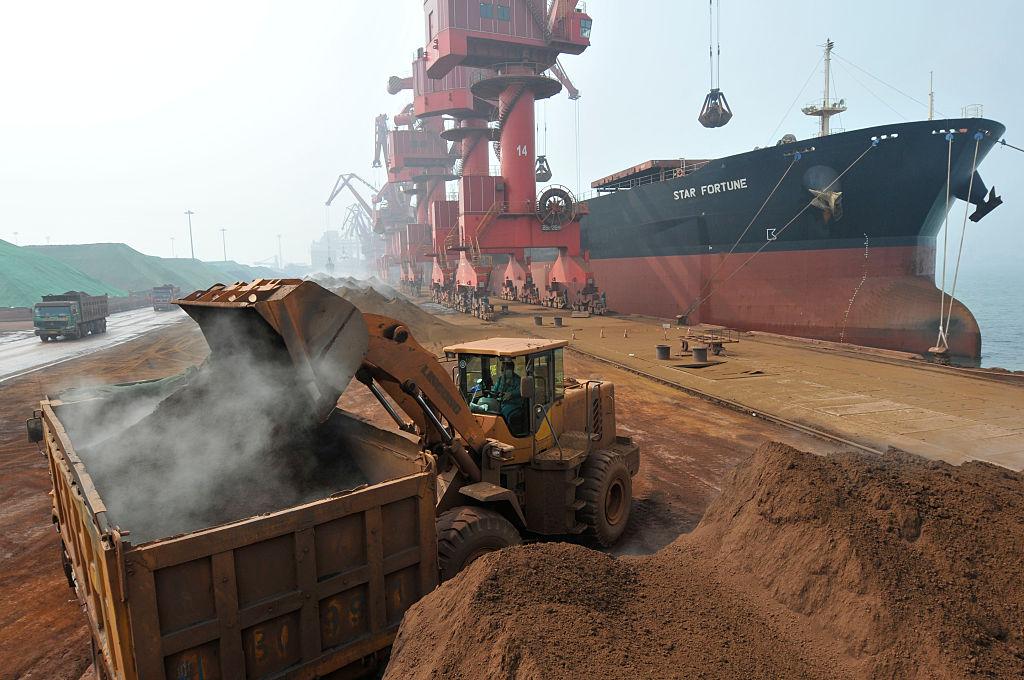Designing an Australian grand strategy for China
Posted By Peter Layton on June 23, 2020 @ 14:45

For Australia, China looms large, but the reverse is not necessarily true. The Chinese Communist Party has many pressing issues domestically in managing 1.3 billion people and the world’s second largest economy, and internationally with the Covid-19 pandemic, a volatile US president and exasperated neighbours. In Beijing, Australia must seem a distant land of limited positive or negative import.
Paradoxically, this gives Australia real agency in the relationship. Australia’s greater concern and attention towards China provides more freedom of manoeuvre than the apparent economic and military power imbalance suggest. Consequently, Australia’s grand strategy for managing its China relationship may be decisive.
A grand strategy [1] involves developing and applying national power to improve the relationship our nation has with another. This whole-of-nation activity integrates multiple interests while using diverse forms of power including diplomatic, economic, societal, cyber and military. Australia’s grand strategic thinking on China should be framed around three key factors.
First, the Australia–China relationship is primarily one of mutually beneficial economic interdependence, not security issues. The two national economies are complementary rather than duplicative. This asymmetry gives scope for economic coercion where one nation threatens to break a valuable linkage unless certain action is taken. Such coercion carries risks, as disrupting even a single link may cause a cascade affecting many others. This becomes more likely when political tensions rise and emotions are inflamed.
China continues to see economic coercion as advantageous even if it gives some in the US a rationale for decoupling from China. The US economy is structurally quite different to Australia’s, but there would be strong pressure to follow any such US move, possibly without any recompense.
Given decoupling’s logic is zero-sum, with any linkage seen as ‘bad’, it’s hard to determine what criteria to use to justify decoupling some sectors but not others. For example, some favour iron ore sales but not scientific research, and yet Australia’s apocryphal tale [2] of decoupling’s importance is the selling of scrap iron to Japan that was ‘returned‘ as bombs in World War II. Decoupling sounds easy but it’s a blunt approach.
An Australian grand strategy should centre on Australia–China economic interdependence not security issues. It needs to manage China’s fondness for economic coercion, remembering this vulnerability cuts and can be exploited both ways, and understanding that threats to this interdependence don’t emanate solely from China.
Second, this economic interdependence is built on China’s modernisation plans, now evolving to focus on technological development. The ‘Made in China 2025 [3]’ plan aims to create an innovative nation that avoids the middle-income trap in which developing nations stagnate with continuing high poverty levels. This advanced manufacturing policy intends to mobilise state-owned and private businesses to fabricate leading-edge technology including electric vehicles, quantum computers, artificial intelligence, 5G communication systems and advanced robotics.
All of these have dual commercial–military application. The US is deeply concerned about the damage such an activist state policy will have on both US companies and US military superiority. This perspective reinforces the decoupling impetus, as continuing trade with China only exacerbates these apparent problems.
China’s technological capabilities can, however, be exaggerated. China is often only the final assembly point of many high-technology items, since many components are made in Western and other East Asian countries. And as Chinese labour costs rise, companies are outsourcing production [4] to neighbouring lower-cost states. China is part of the supply chain but not all of it. It’s as sensitive to accidental or deliberate supply-chain disruptions as others.
An Australian grand strategy should factor in China’s high-tech ambitions, rising US concerns over maintaining technological pre-eminence and an appreciation that keeping China sensitive to disruptions in global supply chains brings strategic advantages.
Third, Australia–China relations are becoming more dynamic. China’s preferred relationship with most is not ideological or through multilateral channels but rather economic and bilateral. This plays to China’s self-perceived strengths but undercuts its other means of building stable relationships. The rise of China’s belligerent ‘wolf warrior’ diplomacy, its exacerbation of border disputes, and its use of coercion domestically all play poorly internationally. There seems a dark side to the ‘China dream’ that is erratic, capricious and immature.
The CCP’s dark side creates uncertainty. Making political or economic commitments that only bring returns over the longer term is beginning to look ill-advised. Commercially, companies are investing [5] in both diversifying their supply chains to avoid sole reliance on China and building duplicate facilities: one inside China to cater to its giant market, the other outside for safety and security.
An Australian grand strategy needs to be devised to succeed even though China is apparently attracted to being simultaneously friendly and adversarial. Agreements made today may not be honoured tomorrow and perhaps the relationship should privilege the near term over the far term.
Australia is vitally interested in its China relationship. Its complicated and complex nature calls for a well-designed grand strategy that maximises the benefits while limiting the costs. This design needs to be shaped by the three factors of economic interdependence, Chinese technological aspirations and increasing unpredictability. The future of the relationship is in our hands as much as China’s. Australia has real agency; let’s use it.
Article printed from The Strategist: https://aspistrategist.ru
URL to article: /designing-an-australian-grand-strategy-for-china/
URLs in this post:
[1] grand strategy: https://blogs.griffith.edu.au/asiainsights/rethinking-grand-strategy/
[2] apocryphal tale: https://www.illawarramercury.com.au/story/2956532/dalfram-dispute-life-lessons-from-the-past/
[3] Made in China 2025: https://www.merics.org/en/papers-on-china/evolving-made-in-china-2025
[4] outsourcing production: https://asia.nikkei.com/Spotlight/Coronavirus/Google-Microsoft-shift-production-from-China-faster-due-to-virus
[5] investing: https://www.forbes.com/sites/annashedletsky/2020/02/03/three-trends-driving-electronics-manufacturing-in-2020/#83a30c87d804
Click here to print.